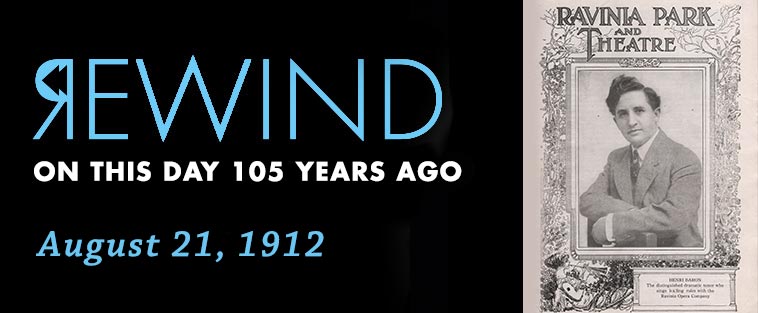
Before Ravinia emerged from the Great Depression in 1936 to begin hosting the incomparable performance residency of the Chicago Symphony Orchestra, it was for about a decade and a half known as the “summer opera capital of the world,” presenting many of the Metropolitan Opera’s foremost stars in selected scenes or acts of that venerable form of music theater. The performances were often so abridged so as to accommodate the schedule of the trains that were the primary means of travel to Ravinia (indeed, it was originally founded in 1904 as a general amusement park along the train line). However, not all operas are multi-hour, multi-act epics. Late in 1912, as the inaugural season of the “Ravinia Opera Company” was beginning to wind down from a month of performances including Puccini’s Madama Butterfly (act 1) and La bohème (act 1), Verdi’s Aida (act 3), La traviata (act 1), and Il trovatore (act 4, scenes 1 and 2), Massenet’s Thaïs (act 2, scene 1; act 3, scene 1), Gounod’s Faust (act 3), Donizetti’s Lucia di Lammermoor (act 2, scene 2; act 3, scene 2), and Wagner’s Lohengrin (act 3, scene 2), a complete opera was presented for the first time on August 21: Mascagni’s Cavalleria rusticana. Though the Met typically paired its performance with another similarly brief opera, most often Leoncavallo’sPagliacci, Ravinia (most likely to avoid overtaxing the already incredibly busy singers) instead had the CSO retake the stage for a handful of orchestral works. Though Cavalleria rusticana was performed twice more that year, on August 24 and September 6, the works after the intermission were different for each date. The later August date featured Smetana’s tone poem The Moldau (recently heard again at the festival on August 1) and the overture to Rossini’s opera Le siège de Corinthe, as well as two solo piano selections: American composer Edward MacDowell’s To a Water Lily from the suite Woodland Sketches and Liszt’s Hungarian Rhapsody No. 12. The September date, however, had its second half devoted to the music of Wagner: “Siegfried’s Rhine Journey” and “Siegfried’s Funeral Music,” respectively from the prologue and act 3 of Götterdämmerung; the “Ride of the Valkyries” from Die Wälkure; and the Huldigungsmarsch (March of Homage), which was written around the same time he had met and begun his affair with Liszt’s daughter Cosima, his future wife, for whom he would later write the Siegfried Idyll, featured on the August 23 program by the Lucerne Symphony Orchestra.
